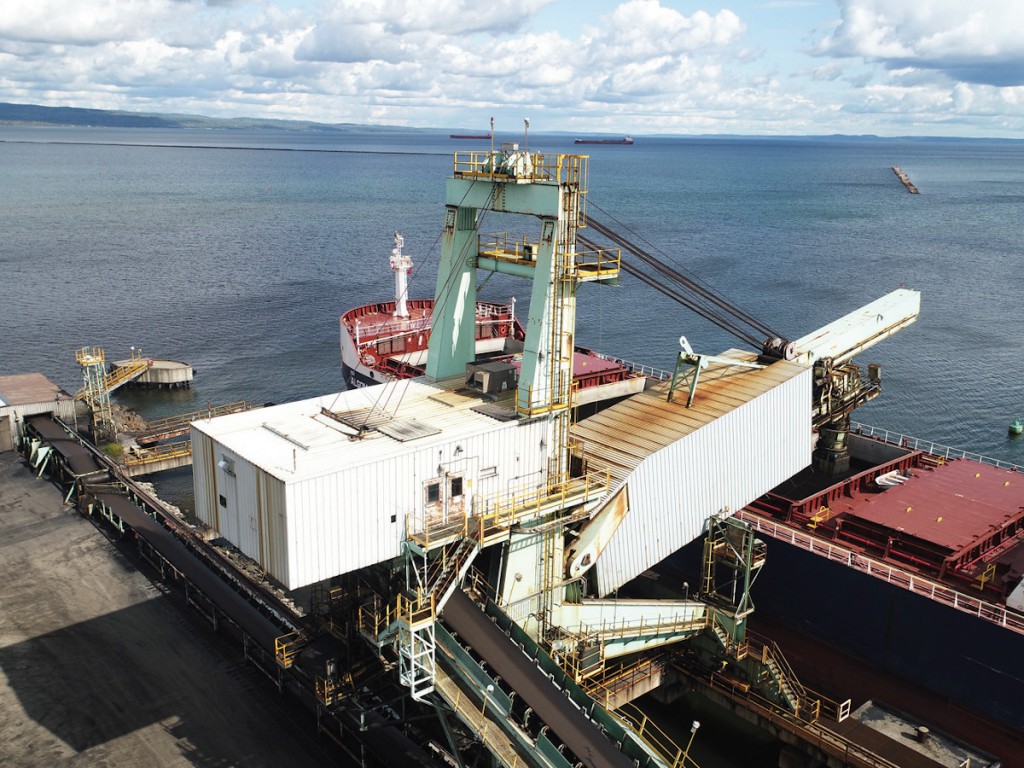Page 1: New Agri-food Business
Page 2: Duluth-Superior Sets Wind Energy Cargo Record
Despite some headwinds, cargo movements through the St. Lawrence Seaway have managed to remain within striking distance of the highest total (41 million metric tons) achieved in a decade in 2018. The ultimate throughput for the 2019 navigation season hinges on performance in the last quarter. For US and Canadian ports on the Great Lakes/Seaway system, the outlook was positive in a number of cases, with some gateways on pace to beat 2018 cargo volumes.

“Seaway activity remains at elevated levels in terms of both domestic and ocean ships currently in the system,” says Terence Bowles, president and CEO of Canada’s Seaway agency, the St. Lawrence Seaway Management Corporation. “As the final quarter of the year is characterized by a burst of shipping activity, we are looking forward to a steady level of demand throughout October, November, and December as industrial and agricultural shippers race to meet their clients’ demands. Despite some inclement weather in Western Canada, volumes should increase as the grain harvest comes to market.”
Cargo shipments in September were buoyed by road salt, iron ore exports and general cargo such as aluminum and wind energy components.
However, overall Seaway volumes were slower due in part to the late Prairie harvest. From March 22 to September 30, Seaway cargo shipments totaled 24.8 million tons, down six per cent from 2018. The figures reflect a combination of factors including the decrease in U.S. grain exports from earlier in the spring and current delays in the Canadian harvest due to the wet field conditions.
Slow harvest progress in Western Canada is delaying the movement of grain to prairie elevators and export terminals on the West Coast and at Thunder Bay. With harvests estimated to be 20% to 30% behind where they would be normally, it is expected there will be more exports late this fall and into December.
Aluminum ingot shipments from Canada to the United States remain up from 2018, following the lifting of American tariffs last year and dry bulk continues to be a strong category due to salt shipments.
Despite the later Prairie harvest, the fall period was strong at the Port of Thunder Bay where year-to-date shipments to end October reached 6.9 million tons, 10% ahead of last year. October was notable for strong coal potash and coal movements.
“Grain shipments have trended upward this season as a result of increased canola deliveries from Western Canada being shipped to Europe,” indicated Tim Heney, CEO of the Thunder Bay Port Authority. He added total canola volumes to date are two-thirds higher than 2018. There has been more stock available throughout the year due to China not buying canola from Canada and more demand after the European canola crop was much smaller this year.
New Agri-food Business
For HOPA Ports (Hamilton Oshawa Port Authority), optimism stems from new agri-food related cargoes. At the Port of Oshawa, a new, $6 million grain export terminal under construction by Sollio Agriculture and QSL is expected to deliver its first overseas exports of Ontario-grown grain this fall.
“This new terminal will be an enormous service improvement for grain farmers east of Toronto. It is also a major step in diversifying the cargo mix through the Port of Oshawa,” said Ian Hamilton, president and CEO of the newly-merged entity which is Canada’s largest Great Lakes port.
At the Port of Hamilton, imports of raw sugar have exceeded 30,000 MT already this season, supplying the newly-expanded SucroCan sugar refinery located at the port. This facility is already highly integrated into Hamilton’s $1 billion regional food processing supply chain, and an example of the value-added businesses that the port has been attracting in recent years.
The Port of Johnstown in eastern Ontario on the St. Lawrence Seaway had a strong September with vessels arriving carrying road salt, wind energy components and steel beams. Total cargo is up by 21% this season over 2018 with salt deliveries and wind energy components making up the increase. A total of 523,577 tons of cargo was handled by vessel vs 432,268 tons in 2018.
Robert Dalley, general manager, Port of Johnstown said: “Overall, we’ve had a good third quarter, however, grain movement by vessel remains flat and this is expected to continue into the 2019 harvest as soybeans sales continue to be affected by current global trade practices.”





